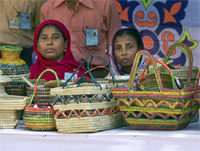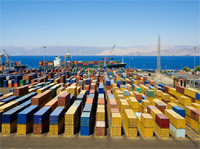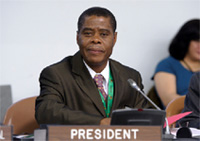
During the Copenhagen World Summit for Social Development in 1995, leaders from across the globe recognized poverty eradication as an ethical, political and economic imperative and identified it as one of the three pillars of social development. Since then, the world has come together to eliminate poverty. As a major step towards this objective, the Millennium Declaration set the target of halving the proportion of people living on less than $1.25 a day between 1990 and 2015.
There has been some success in reducing global poverty levels. World Bank data show that the number of people living on less than $1.25 a day in developing countries declined from 1.9 billion to 1.4 billion between 1981 and 2005 and the proportion of people living in extreme poverty dropped from 52.0 to 25.7 per cent during the same period.
Furthermore, at the High-level Plenary Meeting of the General Assembly on the Millennium Development Goals, held in New York last year, it was predicted that, at the global level, the target would be met. Nonetheless, in some regions the likelihood of achieving the expected objectives will not be feasible.
Beyond income poverty
The absolute number of people living in poverty has gone up in several regions including Sub-Saharan and Northern Africa, Latin America, the Middle East and Central Asia totaling 1 billion people who are living in extreme poverty. In fact, today’s poverty situation is even more serious if we consider its wider definition.
In one of DESA’s flagship publications, Rethinking Poverty: Report on the World Social Situation 2010, it was highlighted that poverty is not simply a lack of adequate income. In short, poverty is the deprivation of one’s ability to live as a free and dignified human being with the full potential to achieve one’s desired goals in life.
The report further explains that the poverty line approach limits the field of vision to individuals and households below the prescribed poverty line, ignoring the fact that there is a large share of the population above the poverty line who are highly vulnerable to poverty. Many households enter and exit poverty as defined by a poverty line as their circumstances and fortunes fluctuate, such fluctuations being a hallmark of deprivation.
In response to the flaws of the monetary based approach, several new measures and approaches are being considered. For example, The United Nations Development Programme (UNDP) launched a new poverty index that takes into consideration deprivations in health care, education and living standards.
The index highlights that the number of people living in multidimensional poverty considerably exceeds those who live on $1.25 a day or less. The new index estimates that about 1.7 billion people live in multi-dimensional poverty while 1.3 billion are suffering from income poverty. This shows that even though countries might have succeeded at reducing income poverty, they are still unable to ensure access to education, health care and food.
While these approaches are presenting more complex data and provide alternative points of entry for developing a framework for a social analysis of deprivation, they all have features that tend to significantly limit their usefulness for this purpose. As a result, the 2010 DESA report stresses that there is the need for more research and reflection to develop a wider analytical framework that incorporates the social exclusion approach to poverty reduction efforts.
Emerging challenges
Reducing poverty requires sustained, inclusive and equitable economic growth. Unfortunately, recent economic changes have failed to enable the right environment for this growth to happen. In fact, in many low-income countries, the slow rate of economic growth constitutes the main challenge to poverty reduction. Without an adequate rate of economic growth to raise the average level of income, opportunities for redistribution and fiscal space for social policy are limited.
Moreover, the economic crisis led to an increase of unemployment rates across the globe. The International Labour Organization (ILO) estimated that globally the number of jobless persons is estimated to have reached 210 million in mid-2010, up from 178 million in 2007. High unemployment levels directly affect income and social integration. Adequately remunerated jobs provide income security, access to social protection, better health and educational status and, ultimately, a way out of poverty. Even though the current economic situation has slightly improved, lack of job recovery continues to hinder poverty reduction.
Today, people living in poverty are not only left out of the job market and of the economic growth process, but they are also often excluded from social and political opportunities, a situation that further increases inequalities at every socio-economic level. Furthermore, poverty and inequality are often passed on from one generation to the next, and the deprivations children suffer at birth and throughout childhood often lead to an adulthood constrained by similar circumstances. Children in families at the lower end of the income distribution scale tend to have poorer health, shorter life expectancy and less education translating into lower income in adulthood.
Additionally, countries affected by conflict, weather-related disasters and other impacts of climate change are even less likely to experience economic growth. For example, it has been estimated that civil war reduces economic growth by at least 2 per cent a year, and thus, a seven-year war could reduce a country’s wealth by 16 per cent. Also, the effects of climate change are impacting the less fortunate at a greater rate than those living in developed nations.
People living in poverty, especially in marginal environments and areas with low agricultural productivity, depend directly on genetic, species and ecosystem diversity to support their livelihoods. If these natural resources become scarce due to changes in climate, they will be unable to satisfy their basic needs reducing their chances of getting out of poverty.
Evidently, polices and measures that were considered effective to eliminate poverty a few years ago do not necessarily take into consideration the impacts that the aforementioned challenges are having on poverty. With less than five years remaining before the target date of 2015, there is the imminent need to create an effective response plan based on national and international renewed efforts that consider poverty as a multi-dimensional issue.
Uniting efforts to eliminate poverty
Despite advances in poverty reduction, the global community continues to recognize that eradicating poverty is the greatest global challenge that the world faces today, and a core requirement to achieve sustainable development. As a consequence, in December 2007 the General Assembly proclaimed the Second United Nations Decade for the Eradication of Poverty (2008-2017).
This second decade aims at supporting the internationally agreed development goals related to poverty eradication and stresses the importance of reinforcing the positive results that some countries have achieved with regard to poverty reduction while it recognizes poverty as a multi-dimensional issue; in 2008, the General Assembly decided “full employment and decent work for all” as a theme for the decade. To achieve the expected objectives of this decade, the UN called for a more coherent and integrated UN system-wide response and is working closely with social partners, NGOs, civil society, and other actors in order to support national governments to implement internationally agreed development goals.
Continuing with the efforts to make the decade an important element to aid the process of poverty eradication, the United Nations Economic and Social Council decided that the priority theme of the Commission for Social Development for the 2011-2012 review and policy cycle would be poverty eradication taking into consideration its relationship with social integration and, full employment and decent work for all.
During the forty-ninth session of the Commission for Social Development, taking place from 9 to 18 February 2011, Member States will gather to evaluate and assess the implementation process of the Copenhagen World Summit for Social Development and other further initiatives adopted since then and provide the necessary recommendations. The commission is also intended to review and consider issues affecting the most vulnerable groups including persons with disabilities, youth and older persons, and discuss emerging challenges with a special emphasis on social protection.
The Second United Nations Decade for the Eradication of Poverty and the forty-ninth session of the Commission for Social Development are important UN led actions to reiterate the urgency of eliminating worldwide poverty. However, to win the battle against poverty, all relevant stakeholders, including member states, civil society and non-governmental organizations must come together and take definite actions.
For more information: http://www.un.org/esa/socdev/csocd/2011.html


